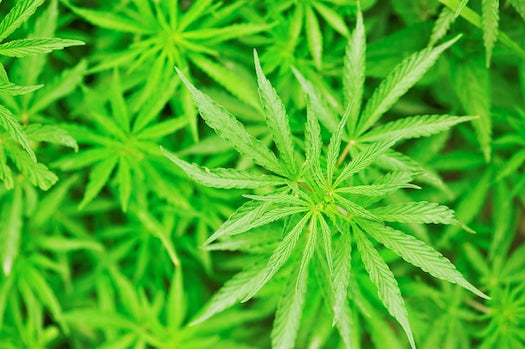Pediatrician Group Recommends Decriminalizing Marijuana For Youngsters
Severe legal punishment does more harm than good, the group finds

Today, the American Academy of Pediatrics is publishing a report on recreational marijuana use among kids under the age of 18. Like a good pediatrician, the report summarizes the latest research to answer kids’ and parents’ most pressing questions. Is pot bad for young brains? Will the newest wave of changes in American law about marijuana make things better or worse? The report ends with a recommendation for lawmakers and voters: Laws need to change so that young people aren’t punished severely for recreational marijuana use.
The last time the academy published a report like this was in 2004. A lot has changed since then. Advances in brain-imaging technology have helped scientists see how marijuana use affects youthful brains, although there’s a lot more to learn. In addition, many states passed laws legalizing medical marijuana, while Colorado and Washington legalized recreational marijuana, too. Those states offered researchers natural experiments where they could track how such laws affected young people.
Let’s get on to the answers:
How many American kids use marijuana?
There are a few surveys measuring this in slightly different ways. Here are the numbers from Monitoring the Future, which surveys 50,000 American students annually. In 2014, 6 percent of 8th graders, 17 percent of 10th graders, and 21 percent of 12th graders used marijuana at least once in the last 30 days, at the time they were surveyed. These numbers are all lower than numbers from the 1990s, when youth pot use was at a peak.
One percent of 8th graders, 3 percent of 10th graders, and 6 percent of seniors in high school reported smoking marijuana daily.
How does marijuana affect kids’ brain development?
This area could use some more research, but the research that we already have indicates that regular or heavy marijuana use is bad for kids’ brains. As the report notes:
Overall, the academy does not want to see you using pot before you’re an adult. There’s “clear evidence showing harm or potential harm from marijuana use by adolescents,” plus “marijuana smoke contains tar and other harmful chemicals, so it cannot be recommended by physicians.” The academy doesn’t even recommend kids under the age of 18 use marijuana medically unless they have a life-threatening condition for which other therapies haven’t worked.
How do marijuana decriminalization and legalization laws affect marijuana use among young people?
Some of the report’s most interesting answers are for questions about decriminalizing and legalizing marijuana. Decriminalization generally means lessening punishments for people caught with small amounts of marijuana, presumably for their own use. Legalization means giving a stamp of approval for the entire industry, including those who have large amounts destined for sale.
When states change their laws on marijuana, it creates a perfect natural experiment for researchers to see before-and-after effects. These effects offer other states, still considering new laws, a peek into the possible consequences of the change.
It seems that laws allowing for medical marijuana don’t generally affect how often teens use marijuana recreationally. Among 14 U.S. states that have legalized medical marijuana and have before-and-after data, the academy found that in only one state, Delaware, did more high school students begin using marijuana recreationally. In two states, Alaska and Montana, fewer high schoolers used marijuana after the law change than before. The others showed no statistically significant change.
Besides use, however, marijuana laws have other important effects on adolescents. They affect how many teens get into legal trouble because of marijuana. Those who get caught may have to spend time in jail, which “can be a very traumatic and dangerous experience,” the academy writes. They may also get notations in their record that make it harder or impossible for them to go to college, or to get loans, housing, and jobs.
All of that trouble usually stems from potentially minor amounts of possession. Before decriminalization, 90 percent of people arrested for marijuana possession in Massachusetts had just one ounce or less on them, the academy reports. The academy found no national data on how much marijuana people usually have on them when they’re arrested.
Finally, black Americans are unfairly affected by the laws currently in place, the academy reports:
Given that legalization of medical marijuana had such a low impact on changing adolescents’ smoking habits, and that kids suffer such extreme consequences after getting caught, the academy suggests that all U.S. law shouldn’t severely punish kids for pot possession. Science says so! From the report:
What’s next for research into marijuana’s effects on kids?
Scientists will continue to study how youthful marijuana use affects people’s health. Also up next is a long look at the effects on kids of laws that legalize recreational marijuana for adults, like in Washington and Colorado. Most researchers agree legalization of recreational pot is a big step that’s likely to have different consequences than what other states have experienced before. The American Academy of Pediatrics formally opposes legalization laws, but the academy, as well as other groups, will be on the lookout for data coming out of the West.